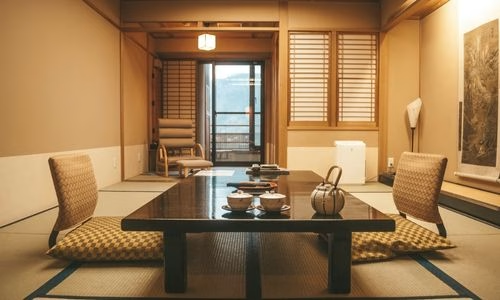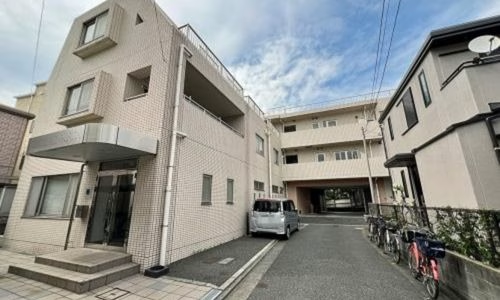Discover how a typical Japanese apartment blends space-saving design, comfort, and efficiency. This comprehensive guide highlights common layouts, smart amenities, and key insights into what to expect when renting or buying a home in Japan’s urban neighborhoods.
Residential Spaces in Japan
Tokyo offers a wide range of housing options, from compact city apartments to spacious homes in nearby suburbs. In central areas, apartments are designed for efficiency, making the most of limited space. Suburban neighborhoods like Chiba and Saitama provide more room at lower prices, appealing to families and commuters.
In 2025, the average salary in Tokyo is estimated at ¥5.5 – 6 million per year, with the median household income around ¥7.5 million. The updated minimum wage is approximately ¥1,130 per hour, reflecting ongoing cost-of-living adjustments.
Most residents choose to rent due to high property prices. Monthly rent in Tokyo ranges widely, but more people are now considering buying, especially in outer wards where flats for sale are more affordable. Foreigners can legally purchase homes, including traditional Japanese houses, which can cost anywhere from ¥10 million in rural areas to over ¥100 million in Tokyo.
Whether you’re renting, buying, or investing, knowing the latest income levels and market trends in Tokyo housing helps guide smarter decisions.

Tokyo Housing Costs and Trends
Common Layouts and Room Types
In Japan, apartment types are often described using a mix of numbers and letters that represent both the number of rooms and the types of shared spaces included. This naming system helps people quickly understand the structure of a unit before visiting or renting it. Here’s a closer look at what these abbreviations mean:
- 1R (One Room): This is a studio unit where everything, from sleeping to cooking, happens in a single space. It’s a compact choice, often selected by students or solo workers who value simplicity and a lower price point.
- 1K: This layout includes one main room and a separate kitchen. It’s slightly more private than a 1R, giving you a distinct area for cooking apart from your sleeping space.
- 2DK: With two rooms and a combined dining/kitchen area, this type offers more flexibility. You might use one room as a bedroom and the other as a lounge or workspace. Ideal for two-person households or young families.
- 3LDK: This spacious layout features three separate rooms plus areas for living, dining, and cooking. It’s commonly found in family homes and offers enough space for bedrooms, an office, and shared living.
Each of these setups supports different needs, whether you live alone, with a partner, or with children.
Features and Amenities
Japanese apartments, even the smaller ones, usually include essential features that support a comfortable lifestyle. Most units have wall-mounted air conditioners that double as heaters, allowing residents to control the temperature all year.
Kitchens, though compact, serve everyday needs well. Many include one or two gas burners, a basic countertop, and space for a refrigerator and microwave. These layouts work well for daily cooking and meal preparation.
Bathrooms focus on function and ease of use. Many have a deep soaking tub next to a waterproof shower area. Since the entire space acts as a wet zone, cleaning becomes quick and easy.
Apartment amenities vary depending on the building’s structure and age. Older buildings, called “apato,” often use wood or light steel frames and may not include elevators, sound insulation, or modern systems. On the other hand, newer concrete buildings, known as “manshon,” usually offer more advanced features such as:
Intercoms or keyless entry systems for security
Package lockers for convenient deliveries
24-hour access to shared trash rooms
Bicycle parking and, in some cases, car parking
Earthquake-resistant construction, essential in Japan’s seismic zones
When you look for an apartment in Japan, these features directly affect your daily comfort and peace of mind. Choosing the right combination of layout and amenities can help you enjoy a more secure and convenient lifestyle.
Size and Floor Area
Apartment sizes in Japan depend heavily on location. In central Tokyo, studio units for singles usually range from 25 to 40 square meters. Small families often choose places between 50 and 80 square meters. Outside the city center, in suburban or rural areas, renters often get more space for the same price, or even less. Those who prefer roomier homes over downtown access often find better value by living farther from the city core.
Japanese interiors are thoughtfully designed to make the most of limited space. Many units feature sliding partitions such as fusuma (opaque) or shoji (translucent paper screens), which allow rooms to be reconfigured easily. Storage is another key consideration, built-in closets (oshiire), overhead cupboards, and underfloor storage help reduce visual clutter and keep living areas neat.
Although room dimensions are usually listed in square meters, it’s also common to encounter measurements based on the number of tatami mats, known as “jo.” One tatami mat is about 1.6 square meters, so a 6-jo room would measure roughly 9.6 square meters. This traditional unit of measurement remains a popular reference, especially for older or more traditional-style homes.
Whether you’re choosing a compact apartment in Tokyo or a more spacious layout in the countryside, understanding how space is measured and used in Japan can help you find a home that fits your lifestyle.

Tokyo vs Suburban Apartments
Rental Prices and Ownership Options
The cost of housing in Tokyo varies significantly depending on several key factors: location, building condition, distance to public transportation, and included amenities.
For rentals:
- A 1K apartment, suitable for solo living, generally ranges from ¥80,000 to ¥130,000 per month, with rates climbing in central districts like Shinjuku or Minato.
- A 2LDK unit, ideal for couples or small families, typically falls between ¥150,000 and ¥250,000 or higher, especially in newer or well-located buildings.
However, monthly rent isn’t the only cost. Renting a place in Japan often comes with several initial expenses:
- Security Deposit (Shikikin): Commonly 1–2 months’ rent, refundable if no damages are found.
- Key Money (Reikin): A non-refundable payment to the landlord, typically one month’s rent.
- Real Estate Agent Fee: Often equal to one month’s rent.
- Guarantor Company Fee: If required, expect to pay 50%–100% of a month’s rent.
These upfront fees can make the initial move-in cost considerably high, so it’s essential to plan accordingly.
Contract Details and Tenant Application Steps
In Japan, rental agreements typically run for two years, with the option to extend the lease at the end of the term. Renewal fees are common and often amount to one month’s rent, though the exact amount may vary depending on the landlord and property.
The rental application process generally follows these steps:
- Searching for a Property: Most people begin by browsing real estate platforms or working with property agents.
- Apartment Viewings: Once you find suitable listings, you can schedule in-person visits.
- Submitting an Application: To apply, you’ll need to fill out forms and submit documentation such as your photo ID, residence card, employment certificate, or proof of income.
- Screening Process: Landlords often require a guarantor company to assess your eligibility. This process may include a credit and background check.
- Signing the Lease: Once approved, you’ll sign the rental agreement and pay all upfront costs, which usually include deposit, key money, agent fees, and the first month’s rent.
It’s worth noting that some landlords may hesitate to rent to non-Japanese tenants, often due to communication difficulties or unfamiliarity with foreign customs. However, many real estate agencies in Tokyo now specialize in helping international residents and can bridge language and cultural gaps to make the process smoother.
Daily Living Experience
Apartment life in Japan is known for its calm atmosphere, clean spaces, and strong sense of mutual respect among neighbors. Whether you’re living in a small unit in central Tokyo or a larger apartment in the suburbs, you’ll quickly notice that Tokyo housing culture emphasizes quiet living and shared responsibility.
One of the most important unspoken rules is to minimize noise, especially during the evening and early morning hours. Older buildings, especially wooden-frame “apato” structures, often lack soundproofing, meaning even subtle noises, like footsteps or television sounds, can be heard by neighbors. Tenants are expected to avoid loud conversations or playing music late at night to maintain harmony in the building.
Here are a few more essential aspects of daily life in a Japanese apartment:
- Waste Disposal and Sorting: Garbage is separated into strict categories: burnable, non-burnable, plastics, cans, bottles, and oversized or hazardous items. Each type has its designated collection day, and improper disposal can result in your trash being rejected by collectors.
- Shared Space Etiquette: Residents are expected to keep common areas like hallways, stairwells, and bicycle parking tidy. In some communities, participation in local cleanup events or small neighborhood meetings is also encouraged.
- Shoes-Off Lifestyle: A core part of Japanese home etiquette is removing your shoes before stepping inside. Most apartments feature a genkan (entrance area) where you leave your shoes and switch to indoor slippers. This tradition helps maintain hygiene and reinforces the idea of separating the outside world from the private living space.
For foreigners living in Japanese apartments, these customs might feel unfamiliar at first, but they’re easy to adapt to and are key to building good relationships with neighbors and landlords. Embracing this lifestyle not only helps you settle in smoothly, but also deepens your appreciation for Japan’s thoughtful, community-centered way of living.
Tips for Foreign Renters in Japan
Finding a place to live in Japan as a foreigner can come with unique challenges, especially when dealing with language barriers, unfamiliar rental procedures, and strict landlord policies. To ensure a smoother experience, here are some helpful strategies for international residents:
- Choose Real Estate Websites with Multilingual Support: Start your housing search on platforms that cater to non-Japanese speakers. Services like GaijinPot Apartments, RealEstate Japan, and Arealty.jp provide English-language listings and support, making it easier to understand rental terms and contact agents.
- Prioritize “Foreigner-Friendly” Listings: Some landlords are more open to working with international tenants. Look for properties clearly marked as welcoming to foreigners, which often means the application process is simplified and more accommodating.
- Bring a Bilingual Supporter When Possible: Having a Japanese-speaking friend, colleague, or interpreter with you during apartment viewings and contract signings can be incredibly helpful. This ensures that you fully understand lease conditions and helps smooth communication with landlords or agents.
- Clarify the Full Cost of Renting: Beyond the base rent, ask about other charges such as management fees, cleaning fees, and utility payments. Some contracts include additional expenses that may not be obvious at first glance, so it’s essential to confirm everything in writing.
- Understand Lease Renewals and Contract Terms: Rental contracts often span two years and may automatically renew with a renewal fee, typically equivalent to one month’s rent. Make sure to read all sections of the lease thoroughly or ask for a translated version if necessary.
Following these suggestions will help foreigners navigate the Japanese rental market with more confidence, avoid common issues, and secure a comfortable home suited to their needs. With preparation and the right resources, living in a Japanese apartment can be both manageable and rewarding.
Future Trends in Japanese Housing
Japan’s residential landscape is shifting in response to an aging population and smaller household sizes. To keep pace, developers are redesigning properties to suit modern lifestyles:
- Compact Layouts: Micro-apartments under 20m² are increasingly common in big cities, catering to solo professionals.
- Eco Upgrades: New constructions often feature solar energy systems, LED lighting, and improved insulation for better efficiency.
- Smart Integration: Home tech like voice-controlled lighting, app-managed heating, and digital entry is gaining traction.
- Shared Housing Models: Co-living setups with communal kitchens and lounges are appealing to students and young professionals.
- Accessible Living: More properties are designed or retrofitted to accommodate elderly residents, focusing on safety and convenience.
These developments highlight a shift toward functional, sustainable, and inclusive housing across Tokyo and the rest of Japan.
Conclusion
Exploring the ins and outs of typical Japanese apartments, from room layouts and daily life to renting procedures, offers valuable insight into what to expect when settling down in Japan. These homes reflect a culture of simplicity, efficiency, and thoughtful design, meeting the needs of both locals and newcomers.
For those beginning their housing search, Arealty.jp provides foreigner-friendly support and curated listings across Tokyo and beyond. Whether you’re after a compact city flat or a more spacious option further out, their team can help you navigate the process with ease and clarity.






Leave a Reply